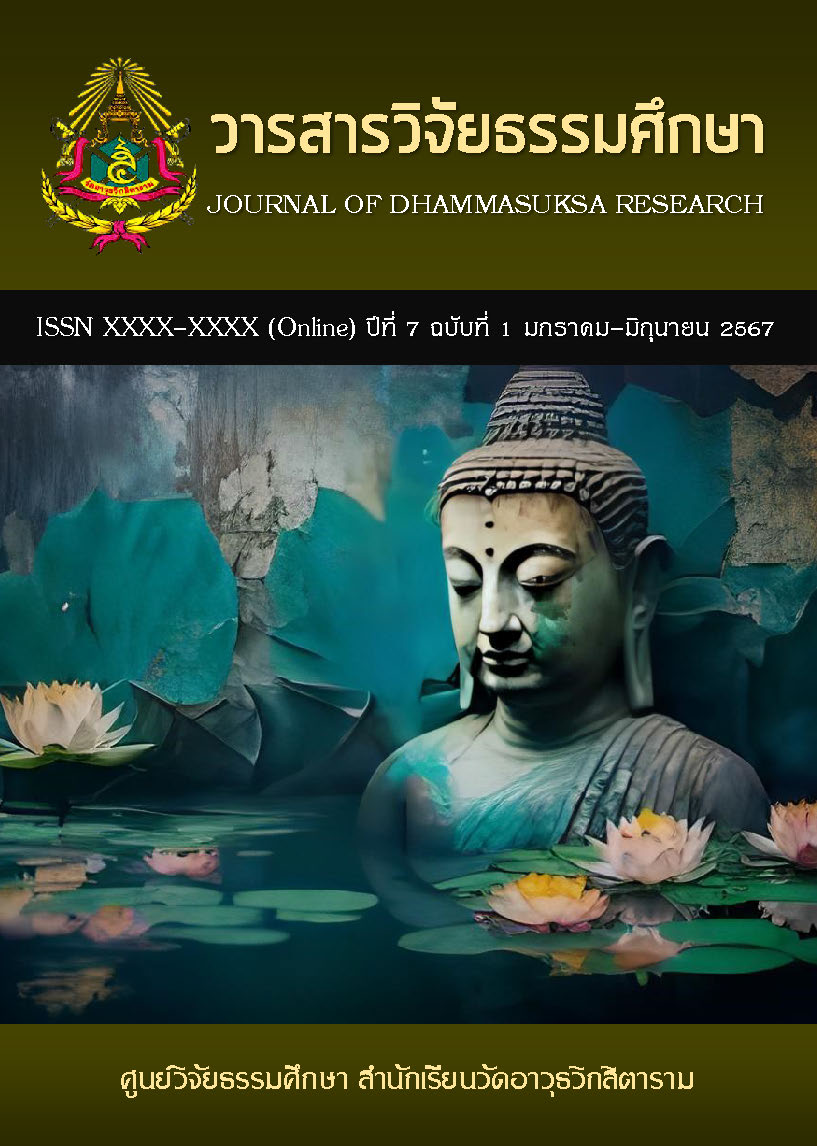FLEXIBLE AND MECHANISM MANAGEMENT AFFECTING TEACHERS’ WORKING INCENTIVE IN UNIVERSITY OF QIQIHAR, HEILONGJIANG PROVINCE
คำสำคัญ:
teachers’ working incentive, flexible and mechanism management, model factors affecting, Qiqihar cityบทคัดย่อ
The research objectives were: 1) To study the component of teachers’ working incentive and flexible and mechanism management in university of Qiqihar, 2) To development the model of flexible and mechanism management factors affecting teachers’ working incentive in university of Qiqihar, And 3) To verify the Model of flexible and Mechanism management factors effecting teachers’ working incentive to fit well with the empirical data. The research design using the quantitative methodology, the population were 2,311 teachers in two public universities of Qiqihar in Heilongjiang Province, The sample size were 396 teachers, determined by G*power program and using stratify random sampling method, the data collecting by a 5 rating scale questionnaires. Divided to 5 sections, There were validity (IOC) of each item between .80-1.0 and reliability on each section between .89-.99, Data analysis by X. SD. CFA and SEM with SPSS and AMOS statistical package program.
The research were finding; the teachers’ working incentive divided on the 3 components namely; teachers’ need, teachers’ self-efficacy and teachers’ motivation, and overall was a high level, The model of flexible and mechanism management factors affecting teachers’ working incentive in university of Qiqihar, Heilongjiang province fit well with empirical data (Chi-square =57.387, df =49, CFI=0.999, TLI= 0.998, RMSEA= 0.021), Flexible and mechanism management has positive direct effect on teachers working incentive and Organizational climate with statistically significance at .01, but no significant indirect effect on teachers working incentive.
เอกสารอ้างอิง
Anca Dunavete. (2022). https://www.yarooms.com/blog/what-is-flexible-office- space-6-flexible-workspace-design-ideas.
Azar, S, Khan, A& Van Eerde, W. (2018). “Modelling linkages between flexible work arrangements’ use and organizational outcomes.” Journal of Business Research, (91):13,143.
Baka Ł. (2017). The Norwegian Teacher Self-Efficacy Scale - Psychometric Characteristics of the Polish version of the Scale. Medical Press 2017; 68(6): 743-755.
Ballard, R. L. (2008). Principals’ leadership style and school climate as perceived by teachers in African-American Christian schools in the Baltimore-Washington, D.C. metropolitan area. Unpublished doctoral dissertation. Capella University, Minneapolis.
Bandura A. (1986). Social foundations of thought and action: a social cognitive theory. Englewood Cliffs, NJ: Prentice Hall.
Cantu, R. J. (2012). Exploring the Relationship Between Perceived Principal Leadership Styles and Perceived School Climate. Our Lady of the Lake University: San Antonio, TX. Dissertations & Theses – Gradworks.
Gaa, S. M. (2010). An exploratory analysis of the relationships between leadership, safety climate, and organizational citizenship behavior within high-containment biosafety laboratories. Unpublished doctoral dissertation. Capella University, Minneapolis.
Hair, J. F. et, al. (2019). Partial least squares structural equation modeling-based discrete choice modeling: An illustration in modeling retailer choice. Business Research, 12(1): 115-142.
Hu, L and Bentler, P.M. (1999). "Cutoff Criteria for Fit Indexes in Covariance Structure Analysis: Conventional Criteria Versus New Alternatives" SEM. 6(1): 1-55.
Markow, D., & Pieters, A. (2012). The MetLife survey of the American teacher: Teachers, parents and the economy. MetLife, Inc. http://eric.ed.gov/?id=ED530021
Meyer, et al. (2002). Affective, Continuance, and Normative Commitment to the Organization: A Meta-Analysis of Antecedents, Correlates, and Consequences. Journal of Vocational Behavioral, 61, 20-52.
Petak, T. A and Miller, G. S. (2019). “Increasing employee motivation and organizational productivity by implementing flex-time.” TIME. 26, 409–423. Retrieved from https://search.proquest.com/docview/2232469313
Pulleyn, J. L. (2012). The relationships between teachers’ perceptions of principal leadership and teachers’ perceptions of school climate. Unpublished doctoral dissertation. University of Nevada, Reno.
Reagan Nickl. (2000). What is A Facilityes Manager?, It Spans All of These. https://spaceiq.com/blog/benefits-of-coworking/.
Zuraik, A., and Kelly, L. (2019). The role of CEO transformation leadership and innovation climate in exploration and exploitation. Eur. J. Innovate. Manag. 22, 84–104.
doi: 10.1108/EJIM-10-2017-0142.
ไฟล์ประกอบ
เผยแพร่แล้ว
รูปแบบการอ้างอิง
ฉบับ
ประเภทบทความ
หมวดหมู่
สัญญาอนุญาต
ลิขสิทธิ์ (c) 2024 วารสารวิจัยธรรมศึกษา

อนุญาตภายใต้เงื่อนไข Creative Commons Attribution-NonCommercial-NoDerivatives 4.0 International License.



